-
 Vaishno Devi Temple,Katra
Vaishno Devi Temple,Katra
Vaishno Devi Temple is the most-sought after pilgrimage of the Hindus. Located at Trikoot Parvat, Mata Vaishno Mandir is the holiest shrine of India and it is famous all over the World. The temple is accessible by a journey of 13 kms from Katra. Katra is a small town that falls in Udhampur district of Jammu. From Jammu, Katra lies at a distance of 50 kms.
-
 Ramalingeswara Temple, Warangal
Ramalingeswara Temple, Warangal
The Ramappa Temple, also known as Ramalingeswara temple is located in the Palampet village at a distance of about 77 km from Warangal. The temple is another example of Kakatiya Dynasty. This is one of the temples which was named after its chief architect. The temple is dedicated to Lord Shiva and the architecture of this temple is similar to the famous Ghanpur Group of Temples of Warangal itself. The temple is a master piece of Kakatiyan architecture and everyone must visit to get a glimpse in the life of Kakatiya people.
-
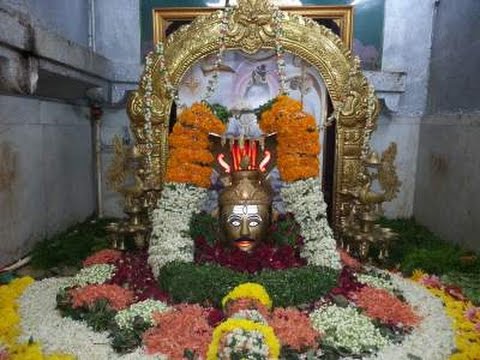 Siddeshwara Swamy Temple, Warangal
Siddeshwara Swamy Temple, Warangal
Siddeshwara temple has a rich ancient history associated with it. The temple was built in 3rd century A.D. Even though built in a time period when life was totally different from today's world, people fascinate about the architecture of this temple a lot.
-
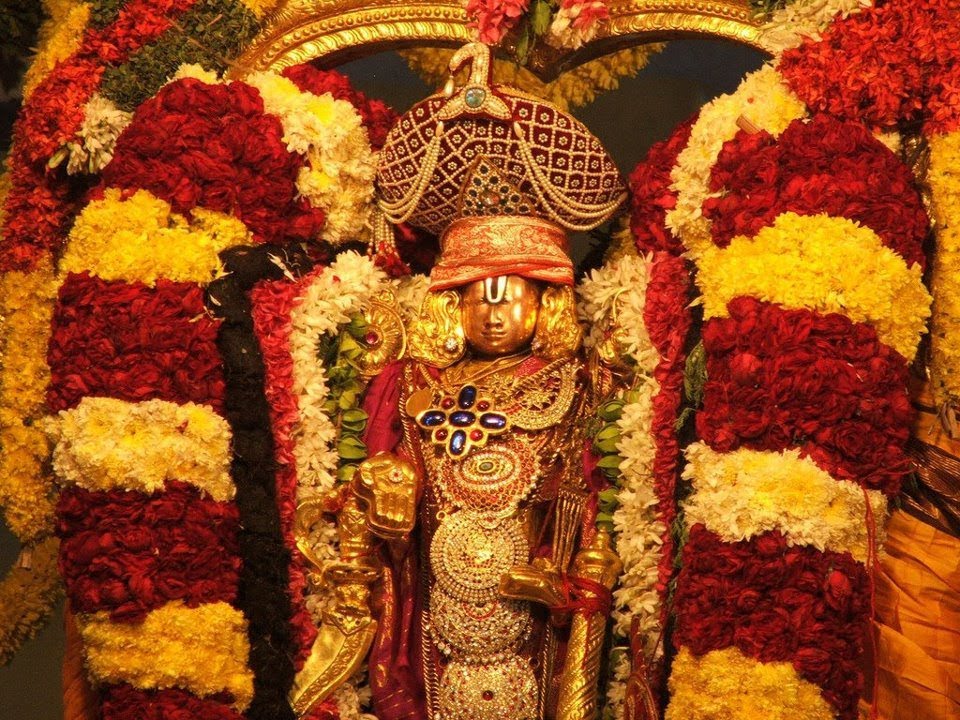 Sri Kakuleswara Swamy Temple, Srikakulam
Sri Kakuleswara Swamy Temple, Srikakulam
Srikakulam has a rich history and is the first capital of the Andhra Kingdom. The ancient Srikakuleswara Swamy temple is located on the banks of River Krishna and is considered to be the 57th of 108 Divya Desams, holiest of shrines dedicated to Lord Vishnu, by Vasihnavaites. The temple has a rich cultural and historical legacy and is one of the oldest temples in the south. Great poets like Srinatha Kavi Sarvabhoumudu, Kasuala Purushottama and Narayanatheertha, the composer of Sri Krishna Leela Tharangini praised the temple in their works. The temple is located in the mandal of Ghantasala, which is a popular Buddhist center.
-
 Sri Mallikharjuna Swamy Temple, Komaravelli
Sri Mallikharjuna Swamy Temple, Komaravelli
The Lord is believed to have manifested as Sri Mallikharjuna Swamy and made Komaravelli his abode in the eleventh century CE. The Lord married Golla Ketamma from the Yadava community and Medalamma from the Linga Balija community, which explains the association of those communities with the worship services of the Lord.
-
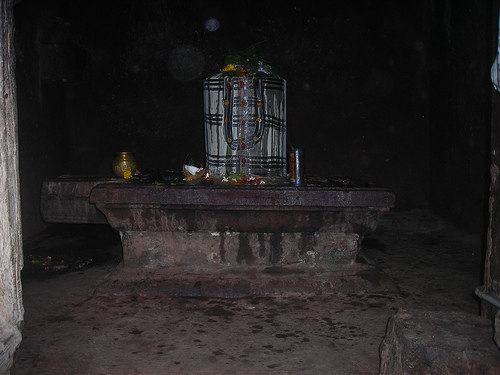 Srimukhalingeswara Temple, Sri Mukhalingam
Srimukhalingeswara Temple, Sri Mukhalingam
Srimukhalingeswara temple, dedicated to Lord Shiva, is a major pilgrimage center in the state. It is located in a village known by the same name, 45-odd kilometers to the north of Srikakulam, on the banks of the holy Vamsadhara River. The temple is known for artistic splendor and stands out as one of the finest examples of Kalinga architecture. Ornate sculptures adorn the Gopurams and walls of this shrine.
-
 Trikooteswara Temple, Narsaraopet
Trikooteswara Temple, Narsaraopet
The temple can be dated to the period of the Chalukyas and is said to be built by an ardent devotee named Elchuri Veeresalingam. Over the course of time, the temple fell under the patronage of the Velama Zamindars of Narsaraopet. who used to worship the Lord with great devotion. They made significant contributions to the temple and the tradition continued until the Zamindari system was abolished after India gained independence.
-
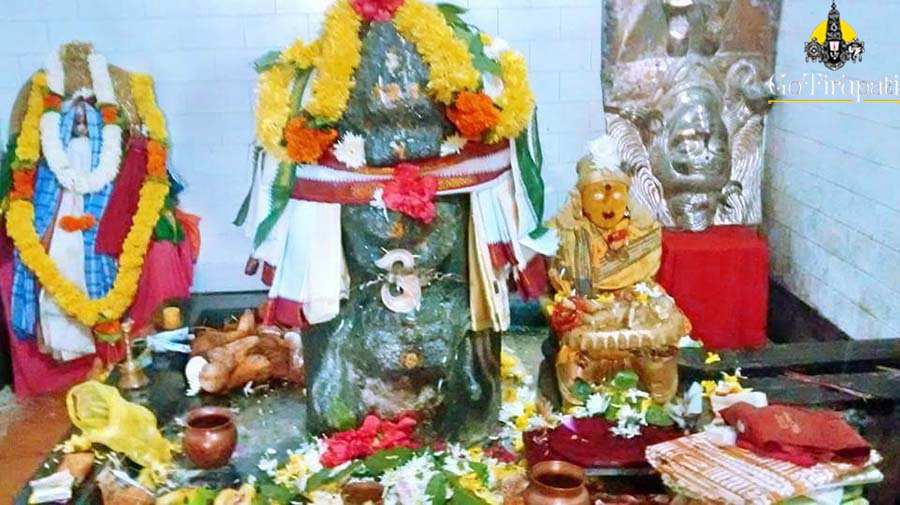 Sri Shakteeswara Swamy Temple, Yanamadurru
Sri Shakteeswara Swamy Temple, Yanamadurru
Sri Shakteeswara Swamy Temple is Located at Yanamadurru just 5KM away from Bhimavaram.Sri Shakteeswara Swamy has been discovered by excavations many years back. During the excavations Lord Shiva Statue along with Sri Parvathi his 3 month old son Sri Subramanyeswara Swamy are found on a single platform.The Oldest name of Yanamadurru village is Yamapuri later Yamunapuram and now Yanamadurru.
-
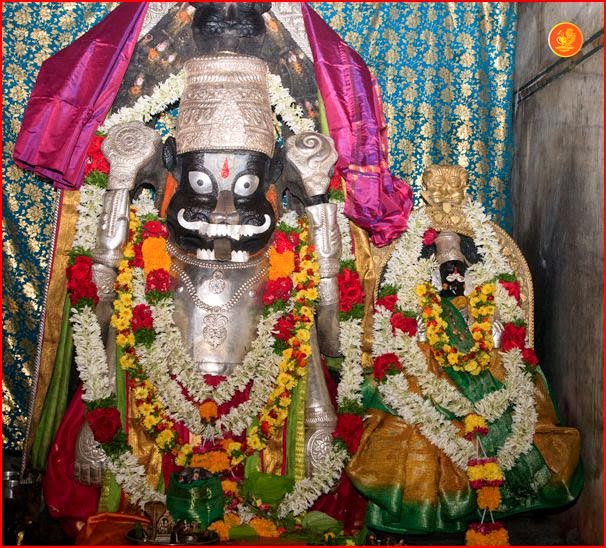 Sri Lakshmi Narasimha Swamy Devasthanam, Dharmapuri
Sri Lakshmi Narasimha Swamy Devasthanam, Dharmapuri
Sri Lakshmi Narsimha Swamy's kshetram in Dharmapuri is one among the nava Narsimha Kshetrams in Andhra Pradesh. Prior, this place was directed by the ruler Dharma Varma henceforth the place is known as Dharmapuri. According to the chronicled foundation of the place, however this refuge existed decidedly before 850-928 BC, it was beat by the Bahumani Sultans in the year 1422-1436 and again in the seventeenth century, the asylum was patched up. In this refuge, swamywaru is cut in Shaligram shila
-
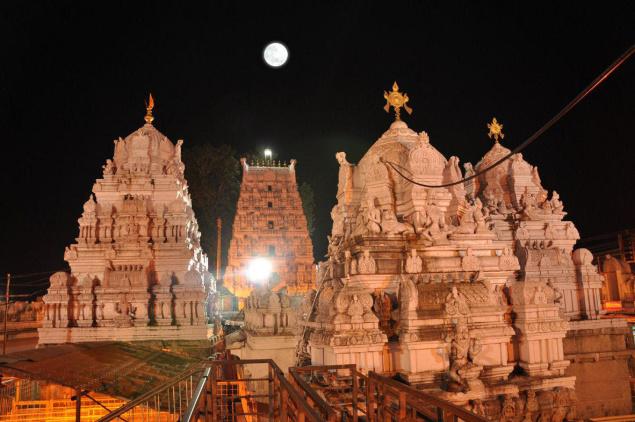 Sri Raja Rajeshwara Temple, Vemulavada
Sri Raja Rajeshwara Temple, Vemulavada
Sri Raja Rajeshwara Swamy Devasthanam ? Abode of Lord Eashwara ? at Vemulawada village of Karimangar District in Andhra Pradesh State is one of the ancient and famous Shivate temples
-
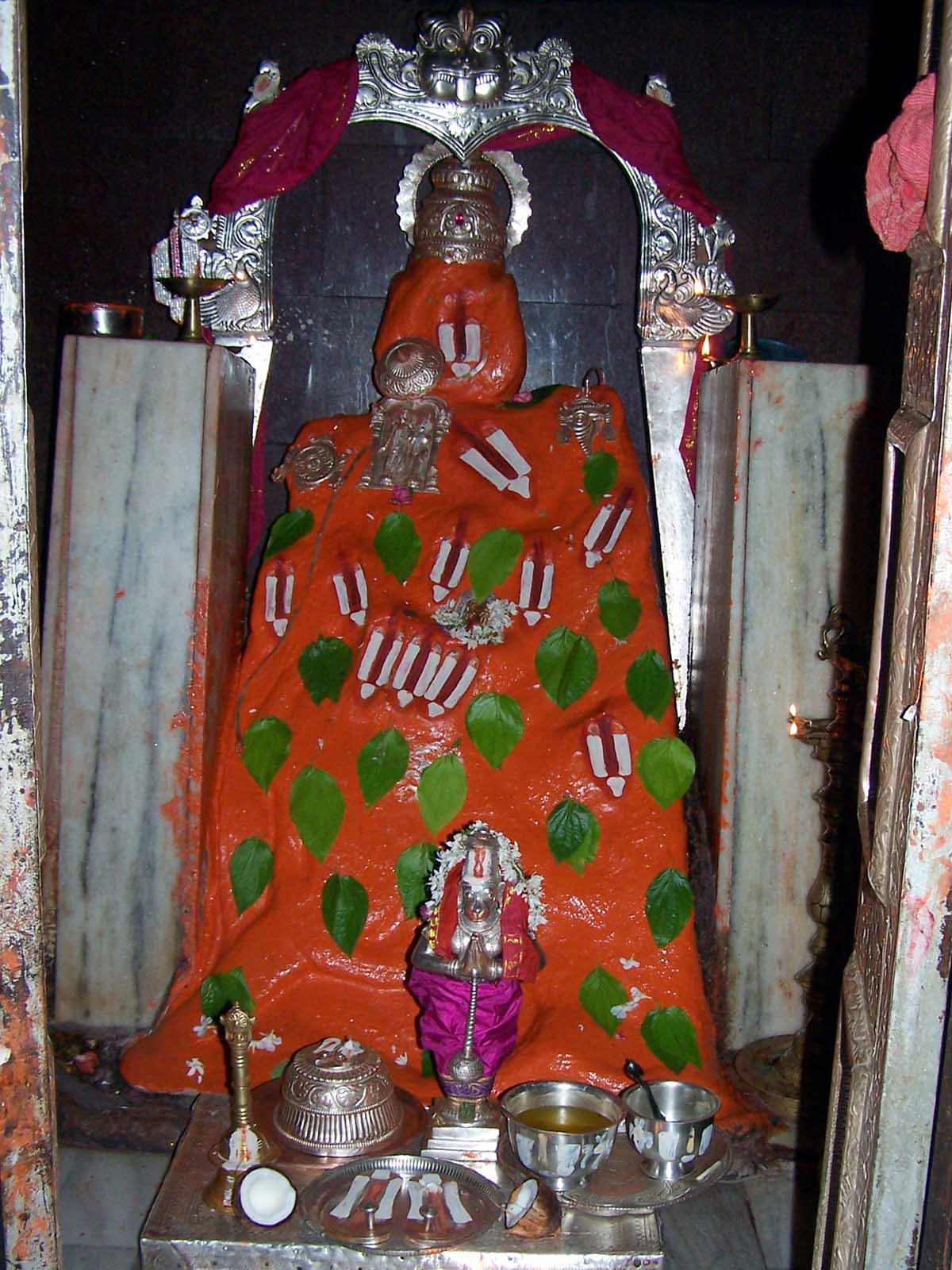 Sri Bhaktha Anjaneya Swamy Temple, Kondagattu
Sri Bhaktha Anjaneya Swamy Temple, Kondagattu
Sri Anjaneya Swamy vari Devasthanam his situated on hill calld Kondagattu Amidst of hills and forest aria at a distance 40 K.M. from Karimnagar and 16 K.M from Jagityal.The presiding deity, Sri anjaneya Swamy varu is said to be Swayambhoo as seen from the silasasana which is available on the external wall ao the main temple.It shows that parents of singam Balaiah i.e Singam Sanjeevudu and Ashamma from Kodimyal Village had Constructed a temple.
-
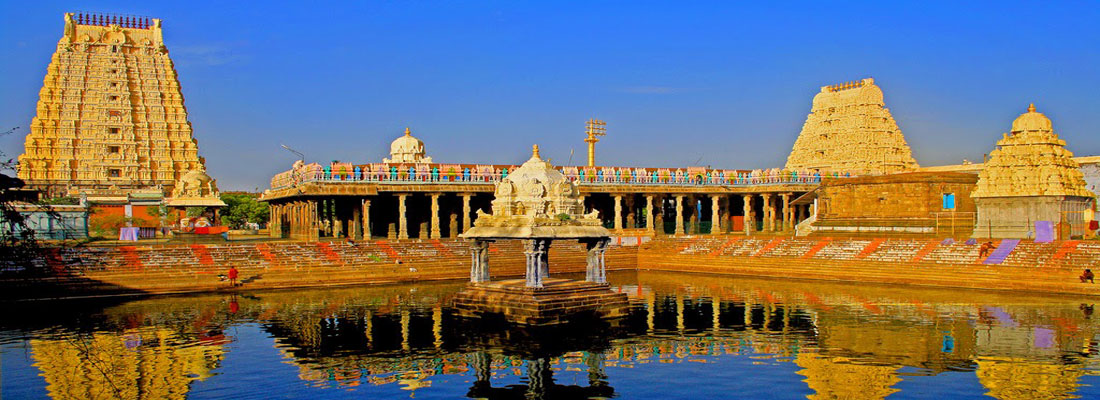 Ekambareswarar Temple Kanchipuram, Tamilanadu
Ekambareswarar Temple Kanchipuram, Tamilanadu
Ekambareswarar Temple is one of the famous Hindu temples dedicated to Lord Shiva, located in Kanchipuram in the state of Tamil Nadu, India.
It is one of the five major Shiva temples or Pancha Bootha Sthalams (each representing a natural element) representing the element - Earth. The other four temples in this category are Thiruvanaikaval Jambukeswara (water), Chidambaram Natarajar (ether), Thiruvannamalai Arunachaleswara (fire) and Kalahasti Nathar (wind).
-
 Sri Chamundeshwari Temple, Mysore
Sri Chamundeshwari Temple, Mysore
The Chamundeshwari Temple is a Hindu sanctuary situated on the highest point of Chamundi Hills around 13 km from the castle city of Mysore in the territory of Karnataka in India. The sanctuary was named after Chamundeshwari or Durga, the furious type of Shakti, a tutelary god held in love for quite a long time by Mysore Maharajas
-
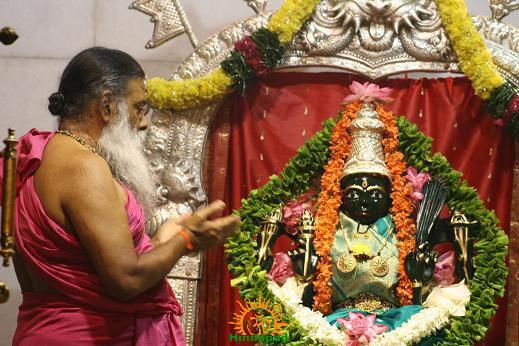 AstavaDasha Shakti peetham Shankari Devi, Sri Lanka
AstavaDasha Shakti peetham Shankari Devi, Sri Lanka
Shankari Devi sanctuary in Tricomalee, Srilanka is a noticeable sanctuary for Hindus. However, it is most once in a while went by and it is minimum prominent in all AstavaDasha Shakti peethas.Shankari Devi Temple is arranged in an east drift town of Srilanka, Tricomalee
-
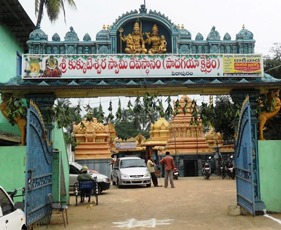 Sri Kukkuteswara Swamy Temple, Pitapuram, East Godavari Dist, Andhra Pradesh
Sri Kukkuteswara Swamy Temple, Pitapuram, East Godavari Dist, Andhra Pradesh
Sri Kukkuteswara Swamy temple is one of the famous temple in India. It is also one of the astadasa Shakti Peeta and also an ancient Shiva kshethra from Krutha Yuga.
-
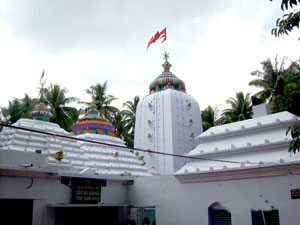 Maa Biraja Devi Temple, Jajpur, Odisha
Maa Biraja Devi Temple, Jajpur, Odisha
The Birja Devi Temple, Jajpur was consecrated as Dakshayanis navel part fallen here. The presiding deity of Jajpur Asta dasha shakti peetha is Goddess Girija Devi. Goddess Girija Devi is also worshiped with various names such as Goddess Birija Devi, Goddess Virija. The temple of Sri Girija Devi is a very small construction when we compare it to Puri Jagannath Temple or Lingraja Temple of bhubaneshwar. Nobody knows the exact time of the Girija Devi temples construction. But it was renovated in the 13th Century. Jajpur is also called as Baithangi Theertha or Birija Kshetram or Oddyana Peetha (an Oddiyana is an ornament worn by a woman around her navel).
-
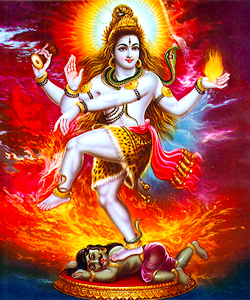 Pancha Sabhai Sthalams / Sthalangal
Pancha Sabhai Sthalams / Sthalangal
Pancha Sabhai Sthalangal refers to the temples of Lord Nataraja, a form of Lord Shiva where he performed the Cosmic Dance. Pancha indicates Five, Sabhai means hall and Stala means place. All these temples are located in Tamil Nadu, India.
-
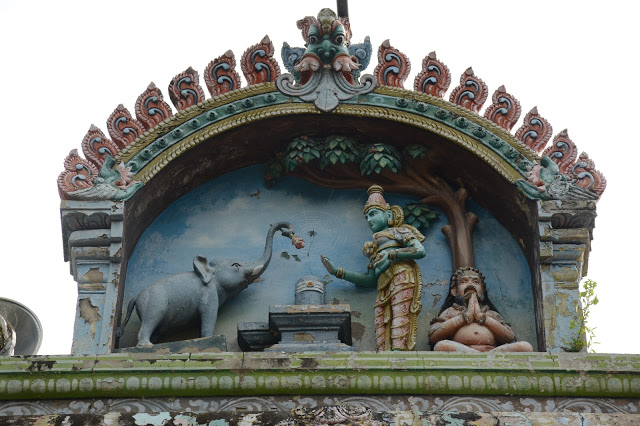 Arulmigu Jambukeswarar Akhilandeswari Temple, Thiruvanaikaval, Trichy, Tamilnadu
Arulmigu Jambukeswarar Akhilandeswari Temple, Thiruvanaikaval, Trichy, Tamilnadu
The temple is one of the Panchabhoota Sthalams (signifying the 5 natural elements) and the sanctum of Lord Jambukeshwara has an underground water stream. And one can see water (neer) coming out of that stream, Hence this temple is also reverred as 'Appu Sthalam' and the ShivaLingam here is called as 'Appu Linga'. The Presiding Deity is Devi Akilandeswari Amman. Akhilandeshwari means 'Ruler of the Universe' (Akilam Universe, Aanda Ruler, Eswari Goddess).
-
 Pancha Bhoota Stalas
Pancha Bhoota Stalas
Pancha Bhoota Stalam or Pancha Bhoota Stala refers to the five Shiva temples, dedicated to Shiva, the most powerful Hindu god among the thirimurthis and also the most mercyful among them, each representing the manifestation of the five prime elements of nature- land, water, air, sky, fire.
-
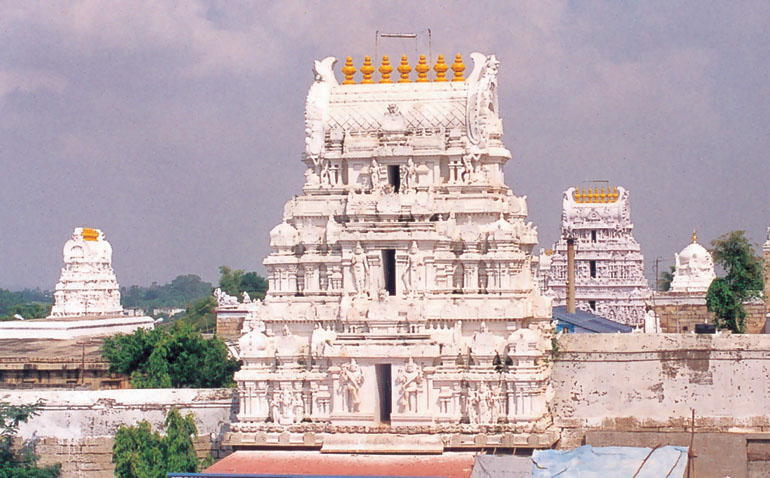 Sri Kalahasteeswara Temple, Srikalahasti, Chittoor, Andhra Pradesh
Sri Kalahasteeswara Temple, Srikalahasti, Chittoor, Andhra Pradesh
Srikalahasti Temple is situated in Chittoor district of the state of Andhra Pradesh. In South India, it occupies a place of eminence among the holy Siva kshetras. The temple is called as Dakshina Kailasam located on the banks of the river Swarnamukhi. The architecture of Srikalahasti Temple-Chitoor is extraordinary, it has three massive Gopurams which are breathtaking. Another striking feature of the temple is its huge Mantapam with hundred pillars.
-
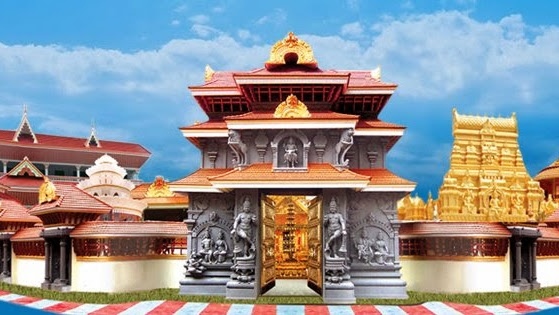 Shri Peringottukara Devasthanam, Kerala
Shri Peringottukara Devasthanam, Kerala
Lord Vishnumaya or Kuttichathan is akin to Sastha, Muruka or Vigneswara but this Sivanandana (The Child of Siva) is worshiped not in common but by a special kind of devotees who need extra ordinary result. ?Vishnumaya is easily pleased and humans? are the words of Devotees. Let us look into the glory of Peringottukara Kuttichathan Vishnumaya. On his way for the divine hunt Lord Siva happens to see Koolivaka, a tribal woman. She was a devotee of Goddess Parvathy.
-
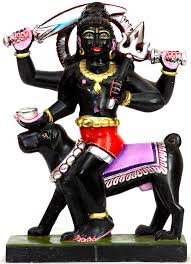 Masik Kalashtami
Masik Kalashtami
Kalashtami, which is also known as Kala Ashtami, is observed every month during Ashtami Tithi of Krishna Paksha. Devotees of Lord Bhairav keep fast and worship Him on all Kalashtami days in the year.
-
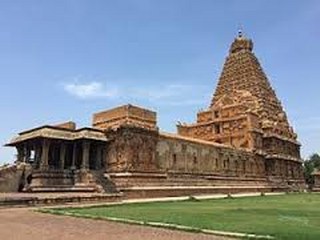 Peruvudaiyaar or RajaRajeshwara Temple, Thanjavur
Peruvudaiyaar or RajaRajeshwara Temple, Thanjavur
The Brihadeeswarar Temple was built to display the emperor's vision of his power and his relationship to the universal order. On the 275th day of his 25th regal year (1010 A.D) Raja Raja Chola handed over a gold-plated kalasam (copper pot or finial) for the final consecration to crown the vimana. Located in the nerve centre of the Chola empire, the temple attracted musicians, scholars, craftsman and merchants. Most notably, it served as a platform for the dancers who excelled in the traditional dance form of Bharatha Natyam. The Cholas were ousted by the Pandyas.
-
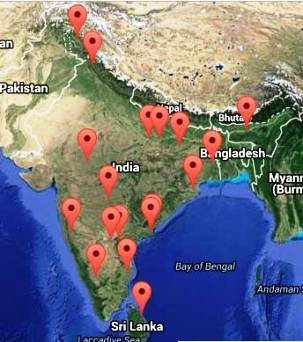 18 Shakti Peethas / Asta Dasa Shakti Peethas
18 Shakti Peethas / Asta Dasa Shakti Peethas
Astadasha Shakthi Peetas Lord Brahma performed a yagna to please Shakti and Shiva. Goddess Shakti emerged, separating from Shiva and helped Brahma in the creation of the universe. Brahma decided to give Shakti back to Shiva. As such, Brahma's son Daksha performed several yagnas to obtain Shakti as his daughter in the form of Sati.
-
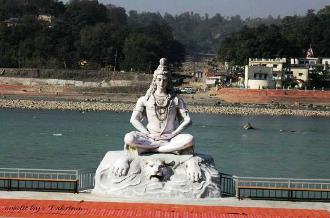 Rishikesh - The Brahmteertha
Rishikesh - The Brahmteertha
The town of Rishikesh lies in the foothills of the Himalayas of the Garhwal region. It is the gateway to the upper Garhwal region and the starting point for the Char Dham pilgrimage (Gangotri, Yamunotri, Badrinath and Kedarnath) and an ideal destination not only for pilgrims but also for the people who are interested in adventure, medtation, yoga and other aspects of Hinduism.
-
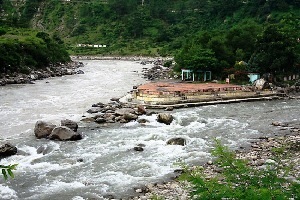 Karan Prayag
Karan Prayag
Karnaprayag is a third or the middle one of the Panch Prayag in Dev Bhoomi Uttarakhand. It is believed by many to be the place where Karn of the Mahabharata, was to have worshipped the Sun God. It is the ancient temple, devoted to Uma and Karn.
-
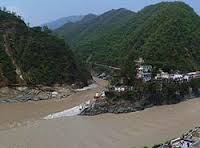 Rudraprayag
Rudraprayag
Rudraprayag lies at the confluence of two rivers Alkananda and Mandakini. It is said that Narad was blessed by Lord Shiva in this place and appeared in Rudra avatar. It is one of the Panch Prayags or five confluences of Alaknanda River. Rudraprayag is blessed with nature's bounty, the climate of which depends upon the height of the region.
-
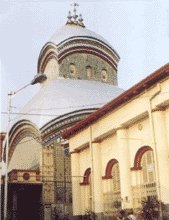 Kalighat Kali Temple, Kolkata
Kalighat Kali Temple, Kolkata
Kalighat is regarded as one of the 52 Shakti Peethams of India, where the various parts of Sati's body are said to have fallen, in the course of Shiva's Rudra Tandava. Kalighat represents the site where the toes of the right foot of Shakti or Sati fell. It is a very famous place and a pilgrimage for Shakta (Shiva and Durga/Kali/Shakti worshippers) followers within the Hindu religion.
-
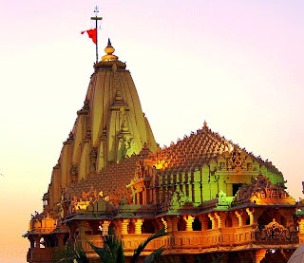 Shree Somnath Mahadev Mandir, Veraval, Gir Somnath, Gujarat
Shree Somnath Mahadev Mandir, Veraval, Gir Somnath, Gujarat
Somnath temple is one of the most important temples in the country and is considered Aadi or the first of the twelve 'Jyothirlingas'. The Sivalinga here is Swayambhu or Natural formation. Somnath temple was referred to in many ancient texts and is one of the richest temples of those times.
-
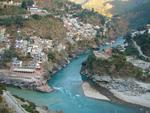 Dev Prayag
Dev Prayag
Devprayag is a town in Pauri Garhwal district in the state of Uttarakhand, India, And is one of the Panch Prayag (five confluences) of Alaknanda River. Other than Sangam and Raghunath Ji Temple in Devprayag, one can visit nearby sacred places like Dand Naggaraj (Lord of Snakes) temple and Chandrabadni temple.
-
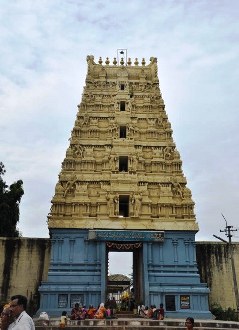 Sri Kaleshwara Mukteswara Swamy Temple, Karimnagar, Telangana
Sri Kaleshwara Mukteswara Swamy Temple, Karimnagar, Telangana
Kaleshwaram is the site of the famous Shiva temple called "Kaleswara muktheswara swamy", which is on the border of theIndian states of Telangana and Maharashtra.Kaleswaram is located exactly at the merging point of the River Pranahita (tributary of Godavari) and the Godavari River.
-
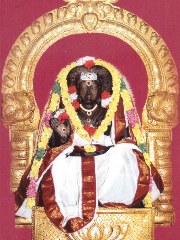 Muktheeswarar or Thilatharpanapuri or Adhi Vinayakar Temple
Muktheeswarar or Thilatharpanapuri or Adhi Vinayakar Temple
Swarnavalli sametha Mukthiswarar temple is located at Thilatharpanapuri 2.6kms from Koothanur. Koothanoor is near Poonthottam which is on Mayavaram ? Tiruvarur Road. The nearest railway station is at Poonthottam. The main deities here are Swarnavalli Thayar and Mukthiswarar. The name Thilatharpanapuri comes from two words thil meaning Gingely and tharpana is the Hindu ritual of performing pithru karmas (ritual of paying tribute to ancestors) to ones ancestors. It is also known as Sethalapathy.
-
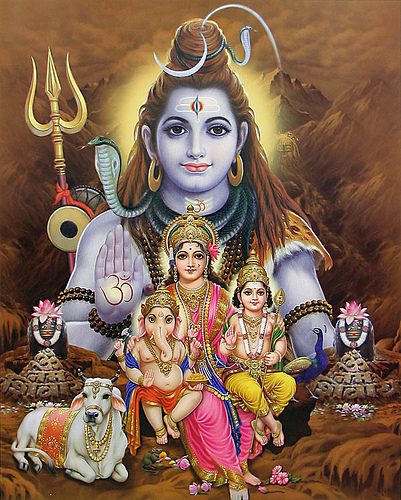 Seven unknown facts about Lord Shiva
Seven unknown facts about Lord Shiva
Har har Mahadev. Lord Shiva, the god of destruction has got softer sides of him also. Here are few stories, which will definitely be of interest to you.
-
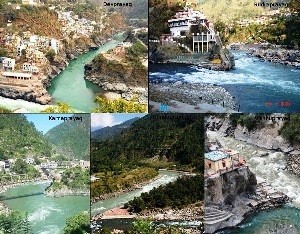 Panch Prayag or Five Confluences
Panch Prayag or Five Confluences
Panch Prayag means "Five Confluences". It refers to the five confluences which takes place at Vishnu Prayag, NandaPrayag, KarnPrayag, Rudraprayag and Devprayag respectively to form river Ganga. Ganga, the most sacred of Indian rivers, is worshipped as the life-giving goddess, which brings salvation to this land.
-
 Arulmigu Ramanatha Swami Temple, Rameswaram, Tamil Nadu
Arulmigu Ramanatha Swami Temple, Rameswaram, Tamil Nadu
The Ramanatha swamy temple at Rameswaram is an extremely important Shiva temple and a major pilgrimage center in the country. The temple is the southernmost of the twelve ?jyothirlinga? shrines of Lord Shiva. Situated off the sethu coast of Tamil Nadu on an island, the temple is considered very holy and is compared to the Kasi Vishwanath temple.
-
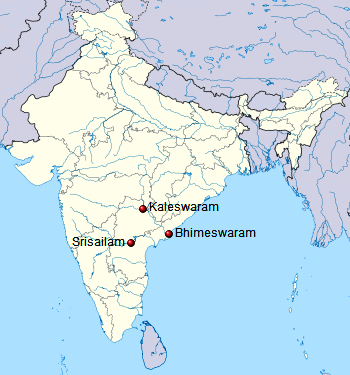 Trilinga Desam or Trilinga Kshetras or Trilinga Temples
Trilinga Desam or Trilinga Kshetras or Trilinga Temples
The Etymology of Telugu is thought to have been derived from trilinga as in Trilinga Desa, "the country of the three lingas" and as per the Mythology, The Lord Shiva has been descended as Shivalingam on three sacred mountains.
-
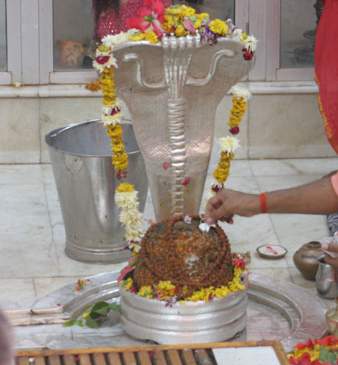 Nageshwar Jyotirlinga,Jamnagar, Gujarat
Nageshwar Jyotirlinga,Jamnagar, Gujarat
Nageshwar Jyotirlinga is an important temple of Lord Shiva near Dwarka. Here, Lord Krishna Himself used to worship and perform Rudrabhishekam. The Rudra Samhita sloka refers to Nageshwar with the phrase Daarukaavane Naagesham. This shloka is also the source about the controversy of the location of this temple.
-
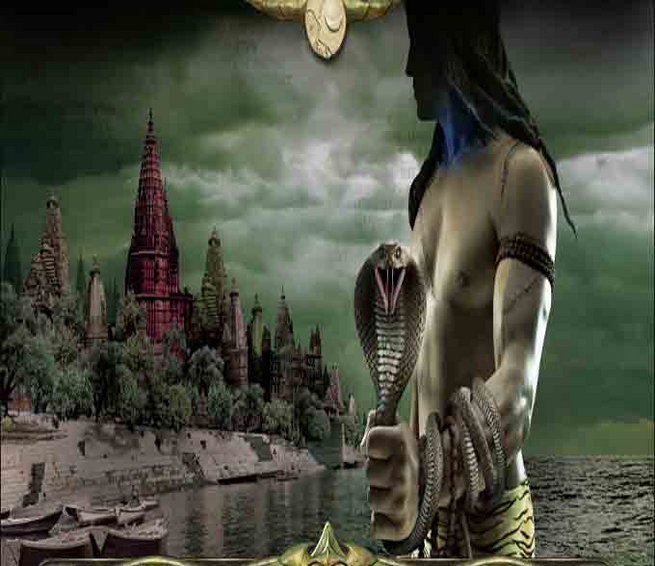 Two avatars of Lord Shiva are stuck on earth since 1000 years!
Two avatars of Lord Shiva are stuck on earth since 1000 years!
The religious scriptures also mentions about many avatars of Lord Shiva. One of these avatars is still wandering on earth for mukti. The second one has been blessed to be alive forever.
-
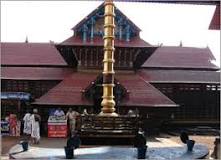 Mahadevar Temple, Ettumanoor, Kottayam, Kerala
Mahadevar Temple, Ettumanoor, Kottayam, Kerala
Ettumanoor Mahadevar temple is one of the oldest, most popular and wealthiest of Shiva temples in the state of Kerala. The temple has rich a cultural legacy and is renowned the world over for its exquisite murals notable of which is the 'Pradosha Nritham' or the dance of the Lord (Shiva).
-
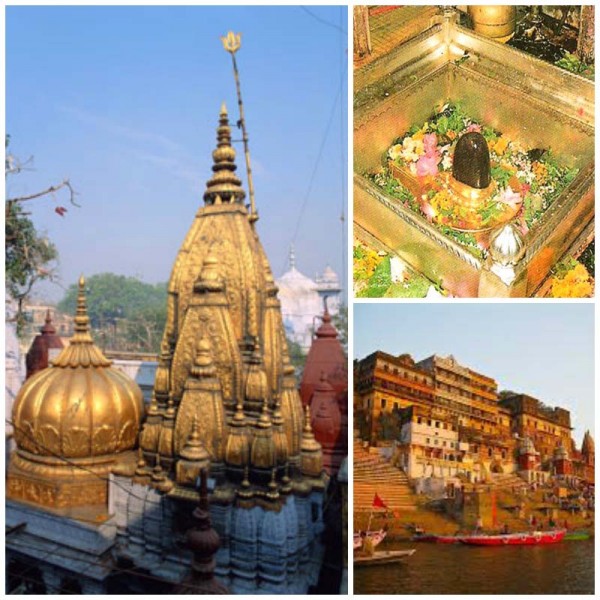 Shri Kashi Vishwanath Mandir, Varanasi, Uttar Pradesh
Shri Kashi Vishwanath Mandir, Varanasi, Uttar Pradesh
The Temple of Kasi Vishwanath is perhaps the most popular temple in the country and is renowned the world over. The temple is in the holy town of Benares or Varanasi on the banks of the sacred River Ganges. The temple forms part of the twelve "Jyothirlinga" Shrine framework of temples dedicated to Lord Shiva and the Siva Linga here is said to be the first "Jyothirlinga".
-
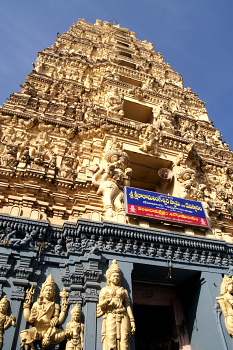 Lord Ksheera Rameswara Swamy, Palakollu, West Godavari, Andhra Pradesh
Lord Ksheera Rameswara Swamy, Palakollu, West Godavari, Andhra Pradesh
Ksheeraramam is one of the most important Shiva temples in coastal Andhra Pradesh and is one of the five Pancharama temples in the state along with Draksharamam, Bhimaramam at Samalkot, Kumararamam at Kotipalli and Amararamam at Amaravathi.
-
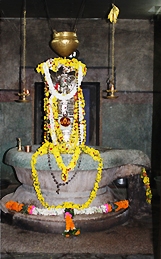 Kumara Rama Bhimeswara Swamy Temple, Samalkot, East Godavari, Andhra Pradesh
Kumara Rama Bhimeswara Swamy Temple, Samalkot, East Godavari, Andhra Pradesh
The Kumara Rama Bhimeswara Swamy temple is a sacred Saivite shrine and is one of the five Pancharama shrines dedicated to Lord Shiva.
-
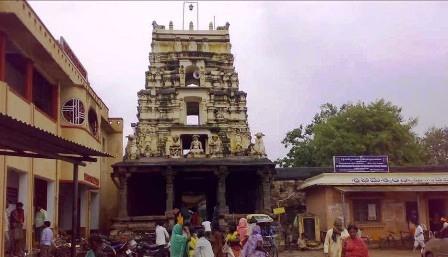 Bhimeswara Swamy Temple, Draksharamam,East Godavari, Andhra Pradesh
Bhimeswara Swamy Temple, Draksharamam,East Godavari, Andhra Pradesh
Draksharamam is an ancient temple and is known as Dakshina Kasi or Benares of the south. The temple is one of the five "Pancharama" Kstetras and also known as Trilinga Desa from its combination with Srisailam and Srikalahasti. This one of those rare shrines where equal importance is given to both the Lord and the Goddess.
-
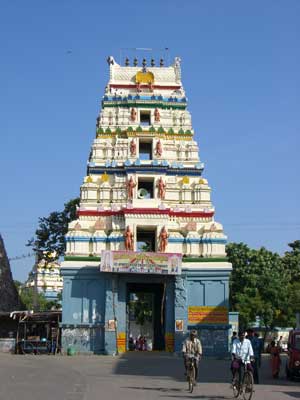 Amareswara Swamy, Amaravathi, Guntur, Andhra Pradesh
Amareswara Swamy, Amaravathi, Guntur, Andhra Pradesh
Amaravati is one of the most important Shiva temples in the south and forms part of the "Pancharama" Framework of Shiva Temples. It is a very ancient temple and is also a major Buddhist center. Devotees can perform Abhisheka to the Lord Themselves here.
-
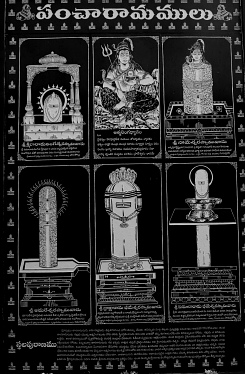 Pancharama Kshetras
Pancharama Kshetras
The Pancharama Kshetras or the Pancharamas are five ancient Hindu temples of Lord Shiva situated in Andhra Pradesh. The Sivalingas at these temples are made from a single Sivalinga.
-
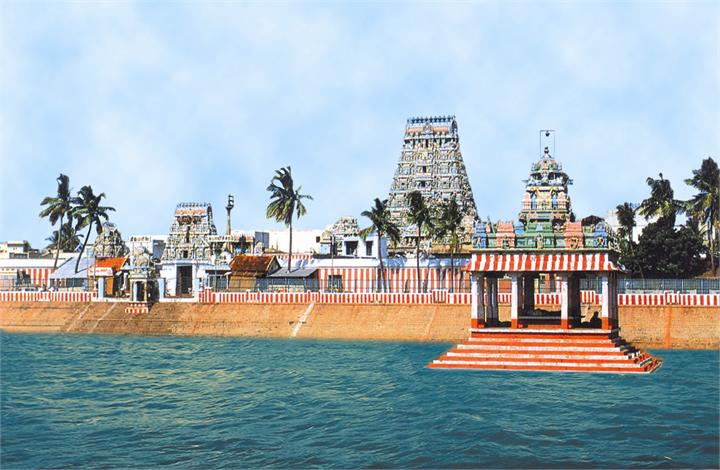 Kapaleeswarar Temple, Mylapore
Kapaleeswarar Temple, Mylapore
Kapaleeswarar temple is a Hindu temple located in Mylapore, Chennai, India. The original 7th century Shiva temple was built by the Pallavas and located on the shore but it was destroyed by the Portuguese and was re-built as a church 300 years later.
-
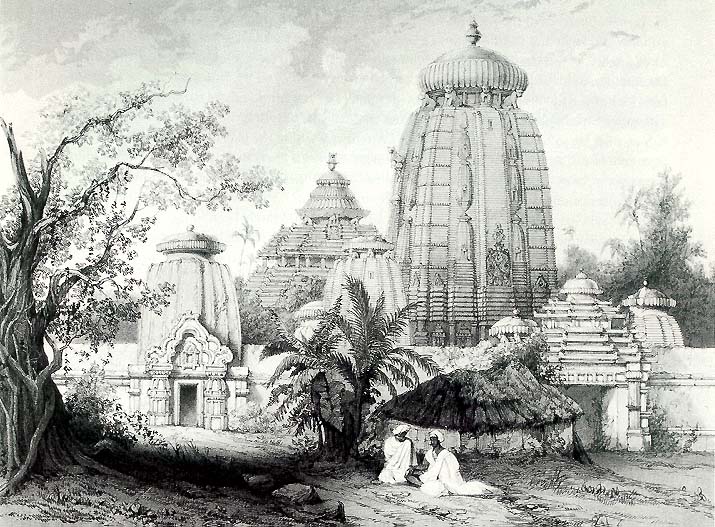 Lingaraja Temple
Lingaraja Temple
The Lingaraja Temple is one of the most famous temple in Orissa. It is one of the best and splendid architectural excellence which the artists had attained during 11th century. This temple is also known as the Bhubaneswar temple.
-
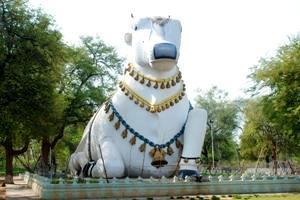 Nava Nandi Darshan
Nava Nandi Darshan
Nava nandi Tour - Get details of nava nandi tour or nine temples of Lord Shiva and tour package operators which you can start from 6 in the morning
-
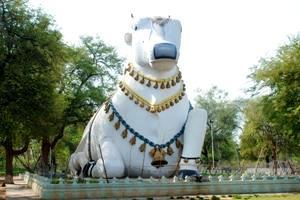 Mahanandiswara Swamy Temple
Mahanandiswara Swamy Temple
Mahanandi is a village located east of the Nallamala Hills near Nandyal, Kurnool District, Andhra Pradesh, India. It is a picturesque village surrounded by thick forests. Within 15 km of Mahanandi, there are nine Nandi shrines known as Nava nandulu
-
 The meaning and importance of Shivlinga
The meaning and importance of Shivlinga
Lord Shiva is worshipped in the form of linga from ancient times. Lord Shiva is one of the trinity of Brahma, Vishnu and Mahesh and even considered to be supreme lord. He has been worshipped by various devtas (gods) in Hindu mythology and by Vishnu Dashavatara's. But why in the form of Linga?